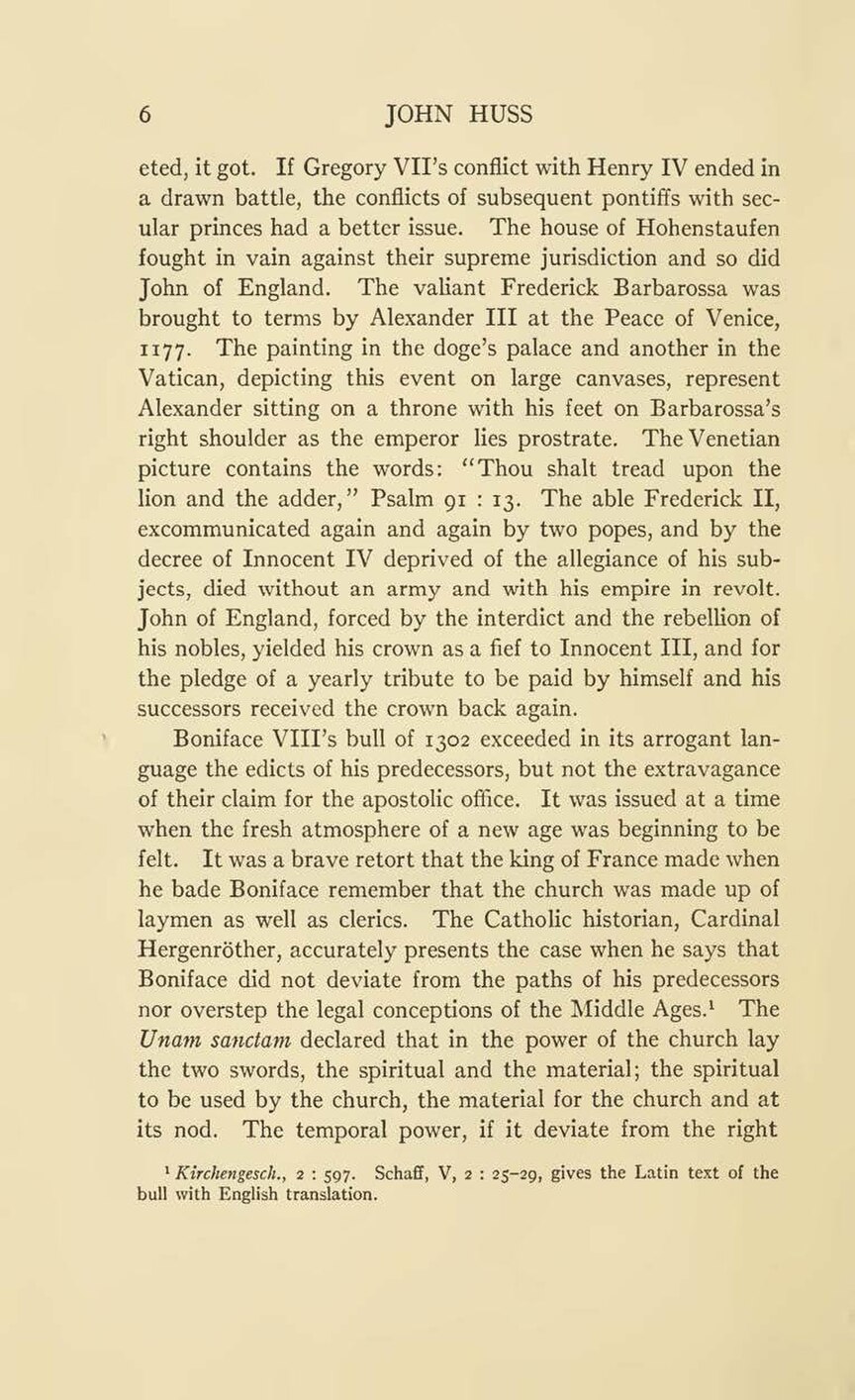eted, it got. If Gregory VII’s conflict with Henry IV ended in a drawn battle, the conflicts of subsequent pontiffs with secular princes had a better issue. The house of Hohenstaufen fought in vain against their supreme jurisdiction and so did John of England. The valiant Frederick Barbarossa was brought to terms by Alexander III at the Peace of Venice, 1177. The painting in the doge’s palace and another in the Vatican, depicting this event on large canvases, represent Alexander sitting on a throne with his feet on Barbarossa’s right shoulder as the emperor lies prostrate. The Venetian picture contains the words: “Thou shalt tread upon the lion and the adder,” Psalm 91: 13. The able Frederick II, excommunicated again and again by two popes, and by the decree of Innocent IV deprived of the allegiance of his subjects, died without an army and with his empire in revolt. John of England, forced by the interdict and the rebellion of his nobles, yielded his crown as a fief to Innocent III, and for the pledge of a yearly tribute to be paid by himself and his successors received the crown back again.
Boniface VIII’s bull of 1302 exceeded in its arrogant language the edicts of his predecessors, but not the extravagance of their claim for the apostolic office. It was issued at a time when the fresh atmosphere of a new age was beginning to be felt. It was a brave retort that the king of France made when he bade Boniface remember that the church was made up of laymen as well as clerics. The Catholic historian, Cardinal Hergenröther, accurately presents the case when he says that Boniface did not deviate from the paths of his predecessors nor overstep the legal conceptions of the Middle Ages.[1] The Unam sanctam declared that in the power of the church lay the two swords, the spiritual and the material; the spiritual to be used by the church, the material for the church and at its nod. The temporal power, if it deviate from the right
- ↑ Kirchengesch., 2: 597. Schaff, V, 2: 25–29, gives the Latin text of the bull with English translation.
